Info
Subfamily: Panicoideae
Genus etymology: Schizachyrium = "split chaff" [Greek] refering to the bifid upper lemmas
Species etymology: sanguineum = "blood red" [Latin] refering to the florets
Photosynthetic type: C4 (warm season)
Nativity: naturalized - accidental
First recorded in Hawaiʻi: 1987
Map
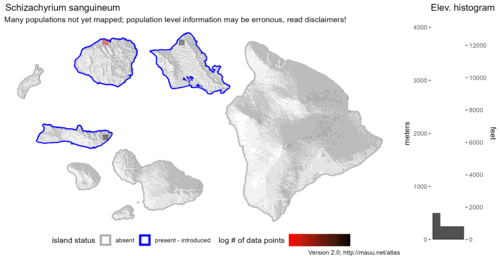
Inflorescence
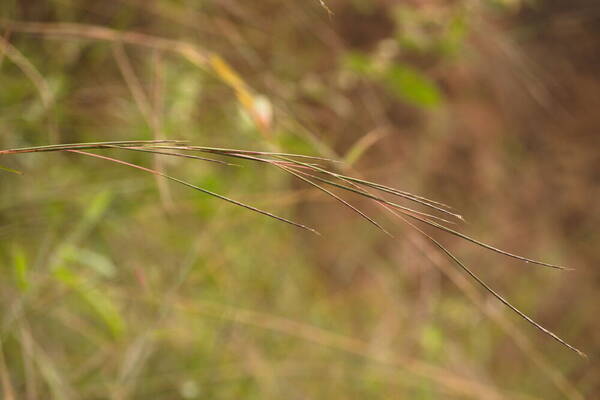
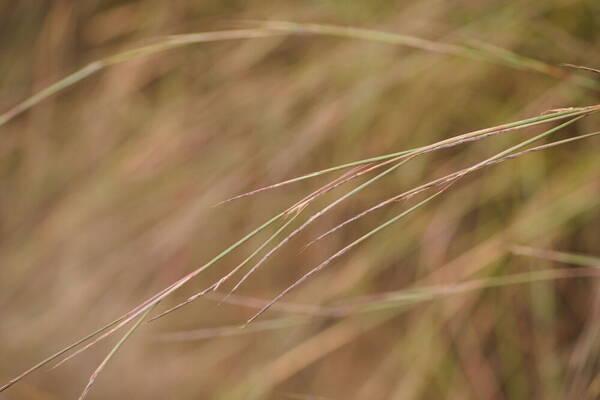
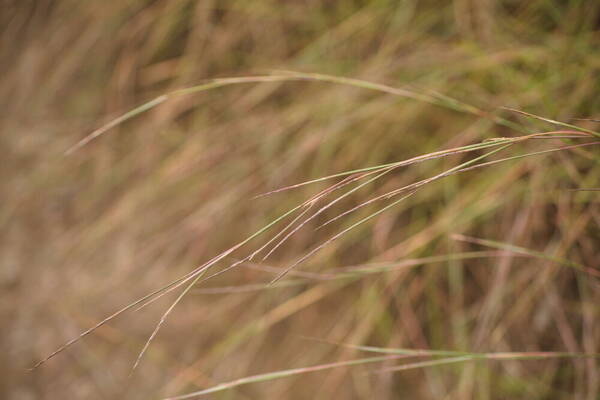
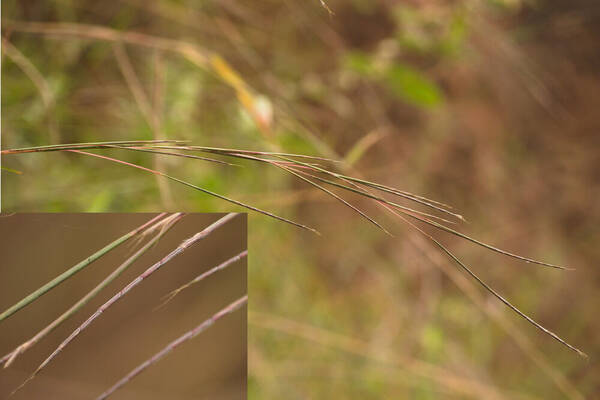
Habit
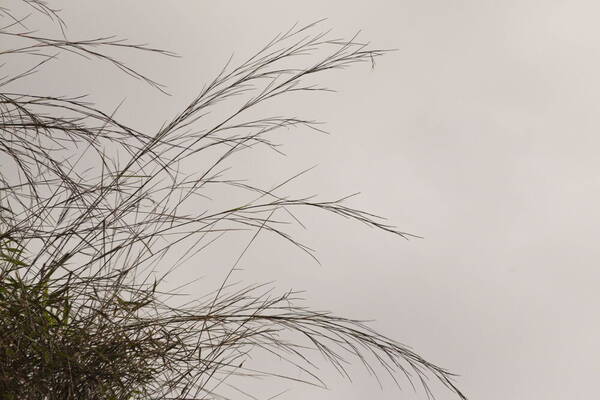
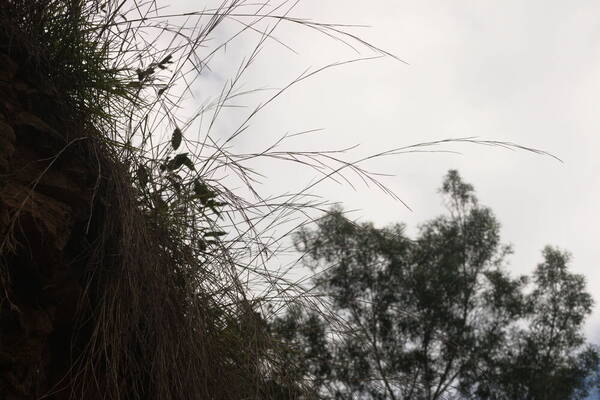
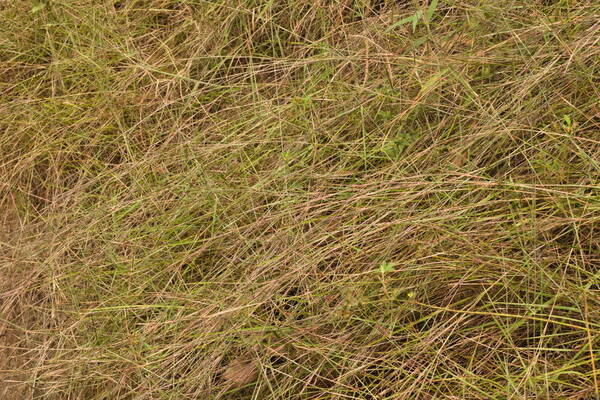
Spikelets
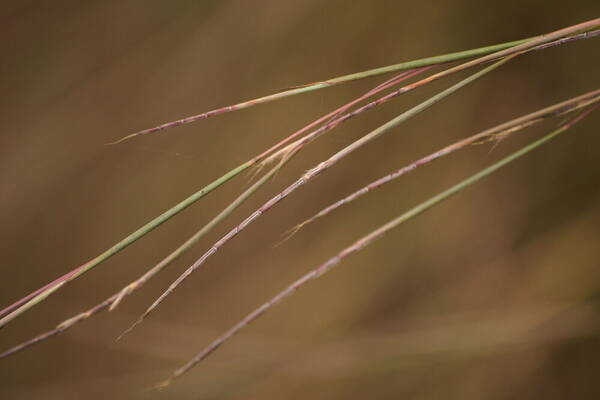
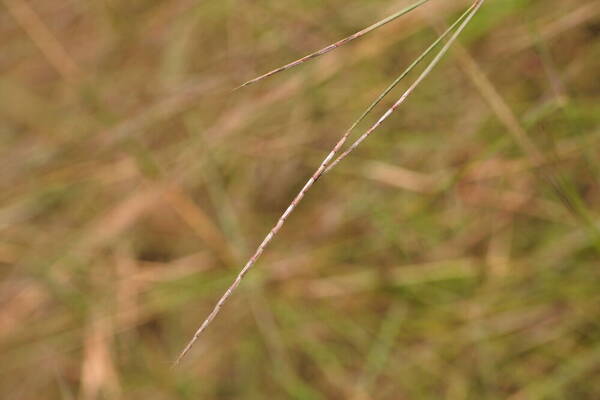
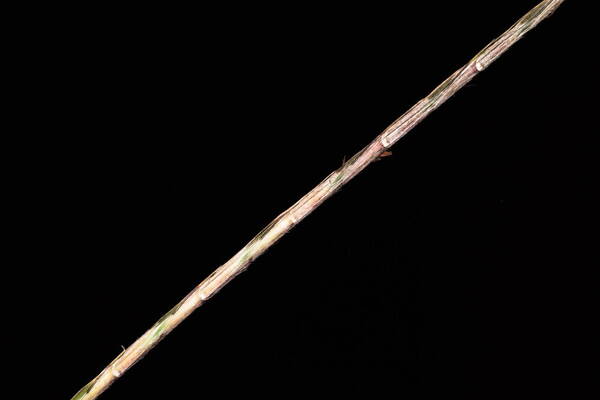
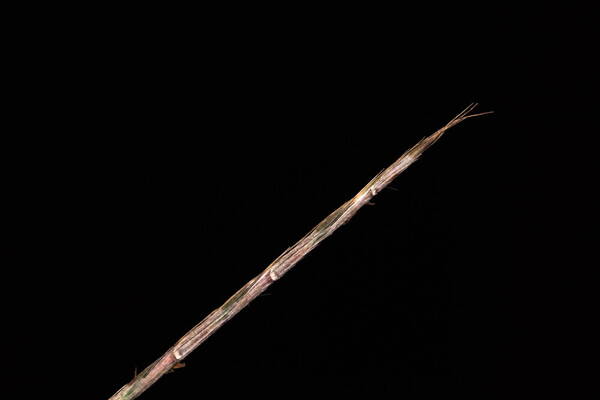
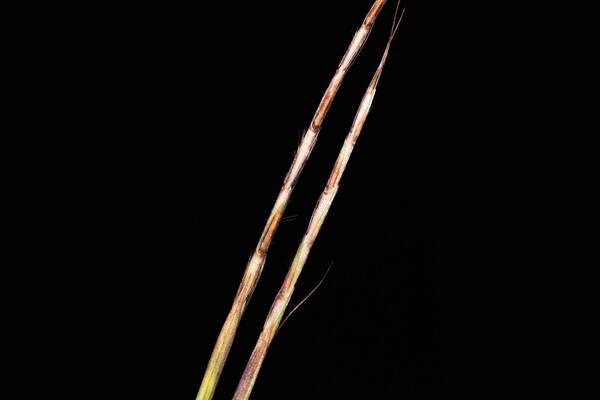
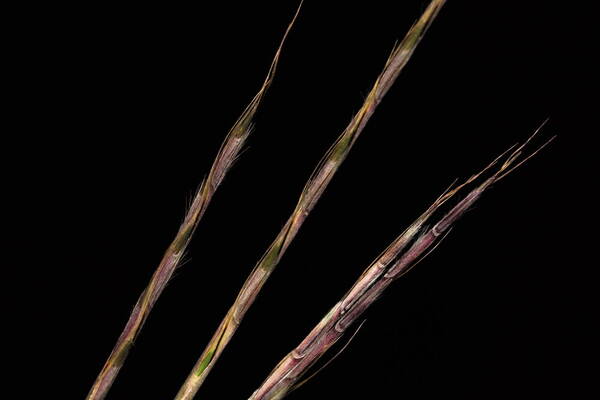
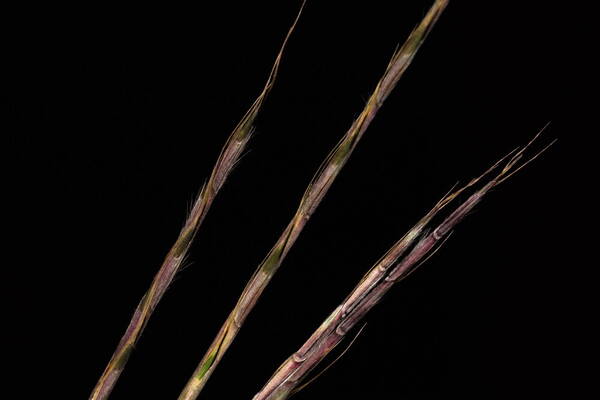
Description
Tufted perennial, the basal sheaths glabrous or rarely sparsely pubescent; culms 0.6–3 m. high, erect, the whole plant commonly reddish in colour. Leaf-blades 6–30 cm. long, 2–9 mm. wide, acute (sometimes abruptly so). Racemes 5–12(–20) cm. long; internodes and pedicels clavate, usually ciliate (hairs ± 1 mm.), sometimes glabrous or villous; spatheoles linear, the racemes pedunculate and ± exserted. Sessile spikelet linear, 5–10 mm. long, squeezed between internode and pedicel; lower glume subcoriaceous, apparently nerveless (except at the tip), keeled almost the whole length of the flanks, narrowly winged above, glabrous to villous; upper lemma bifid for 3/4 its length; awn 8–20 mm. long. Pedicelled spikelet lanceolate, 3–7 mm. long, acuminate or with an awn-point seldom over 3 mm. long. Fig. 178.
(Description source: Clayton, W.D. & Renvoize, S.A. 1982. Flora of Tropical East Africa. Gramineae (Part 3). A.A. Balkema, Rotterdam. 448 pp. )
Loosely caespitose perennial, eventually reddish throughout; culms up to 160 cm high, erect, branched; internodes terete. Leaf sheaths both shorter and longer than the internodes, occasionally villous towards the top; laminas 12.5–30 mm × 2.5–6 mm, keeled, tapering to a fine point at the apex. Racemes 4–18 cm long, exserted from the linear spatheoles, occasionally long-exserted; peduncles longer than the racemes; internodes and pedicels flattened, usually ciliate along both margins with hairs 2.5–4 mm long. Sessile spikelet 5.5–10 mm long, 1/2 as long again as the pedicel, narrowly lanceolate, laterally compressed, pointed at the base; inferior glume strongly convex, glabrous; superior lemma bifid in the upper 3/4; awn 10–22 mm long, geniculate; anthers 2.5–3.8 mm long. Pedicelled spikelet male or occasionally sterile, 4–7 mm long; inferior glume with an awn 1–4 mm long; anthers 1.3–2.3 mm long.
(Description source: Cope, T.A. (ed.). 2002. Flora Zambesiaca. Volume 10. Part 4. Kew, London. 190 pp. )
Plants cespitose. Culms 40–120 cm, erect, not rooting or branching at the lower nodes, glabrous. Sheaths glabrous, rounded; ligules 0.7–2 mm; blades 7–20 cm long, 1–6 mm wide, usually with long, papillose-based hairs basally, glabrous elsewhere, sometimes scabrous, without a longitudinal stripe of white, spongy tissue. Peduncles 4–6 cm; rames 4–15 cm, not open, usually almost fully exserted at maturity; internodes 4–6 mm, straight, from mostly glabrous with a tuft of hairs at the base to densely hirsute all over. Sessile spikelets 5–9 mm; calluses 0.5–1 mm, hairs to 2 mm; lower glumes glabrous or densely pubescent; upper lemmas cleft for (2/3)3/4–7/8 of their length; awns 15–25 mm. Pedicels 3–6 mm long, 0.3–0.5 mm wide at the base, gradually widening to about 0.6–0.8 mm at the top, straight. Pedicellate spikelets 3– 5 mm, usually evidently shorter than the sessile spikelets, sterile or staminate, awned, awns 0.3–6 mm.
(Description source: Barkworth, M.E., Capels, K.M., Long, S. & Piep, M.B. (eds.) 2003. Flora of North America, north of Mexico. Volume 25. Magnoliophyta: Commelinidae (in part): Poaceae, Part 2. Oxford University Press, New York. 783 pp http://floranorthamerica.org/Schizachyrium_sanguineum )